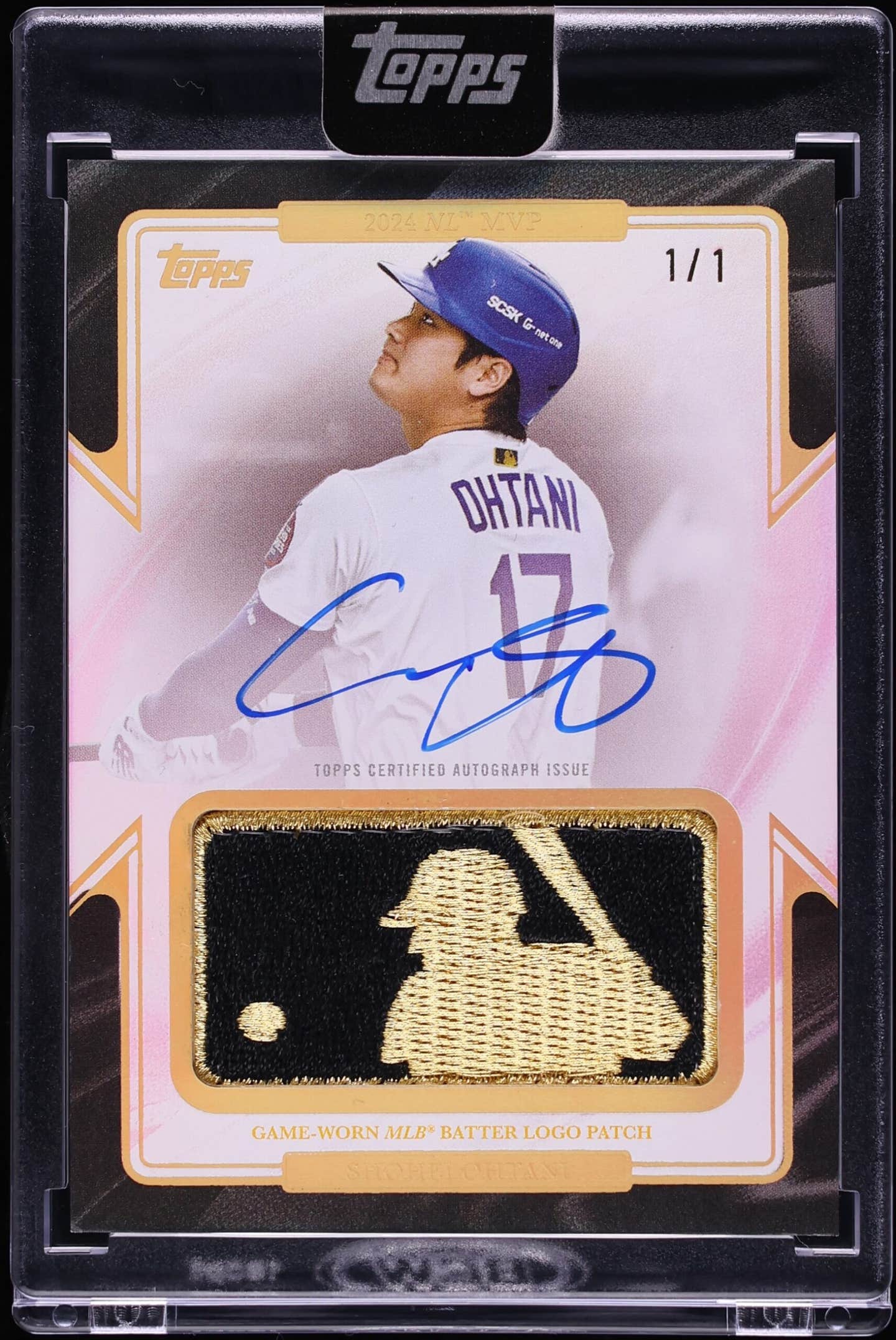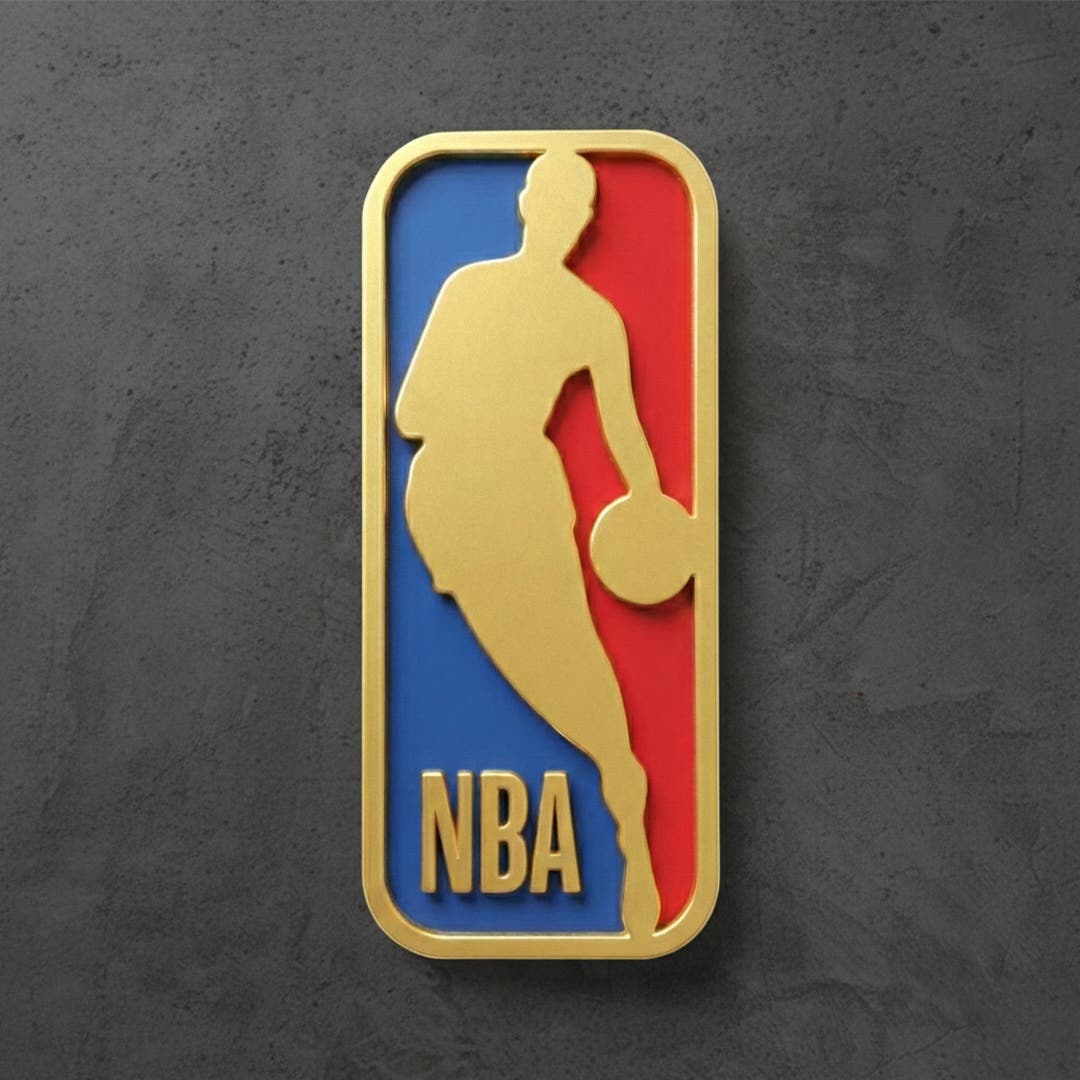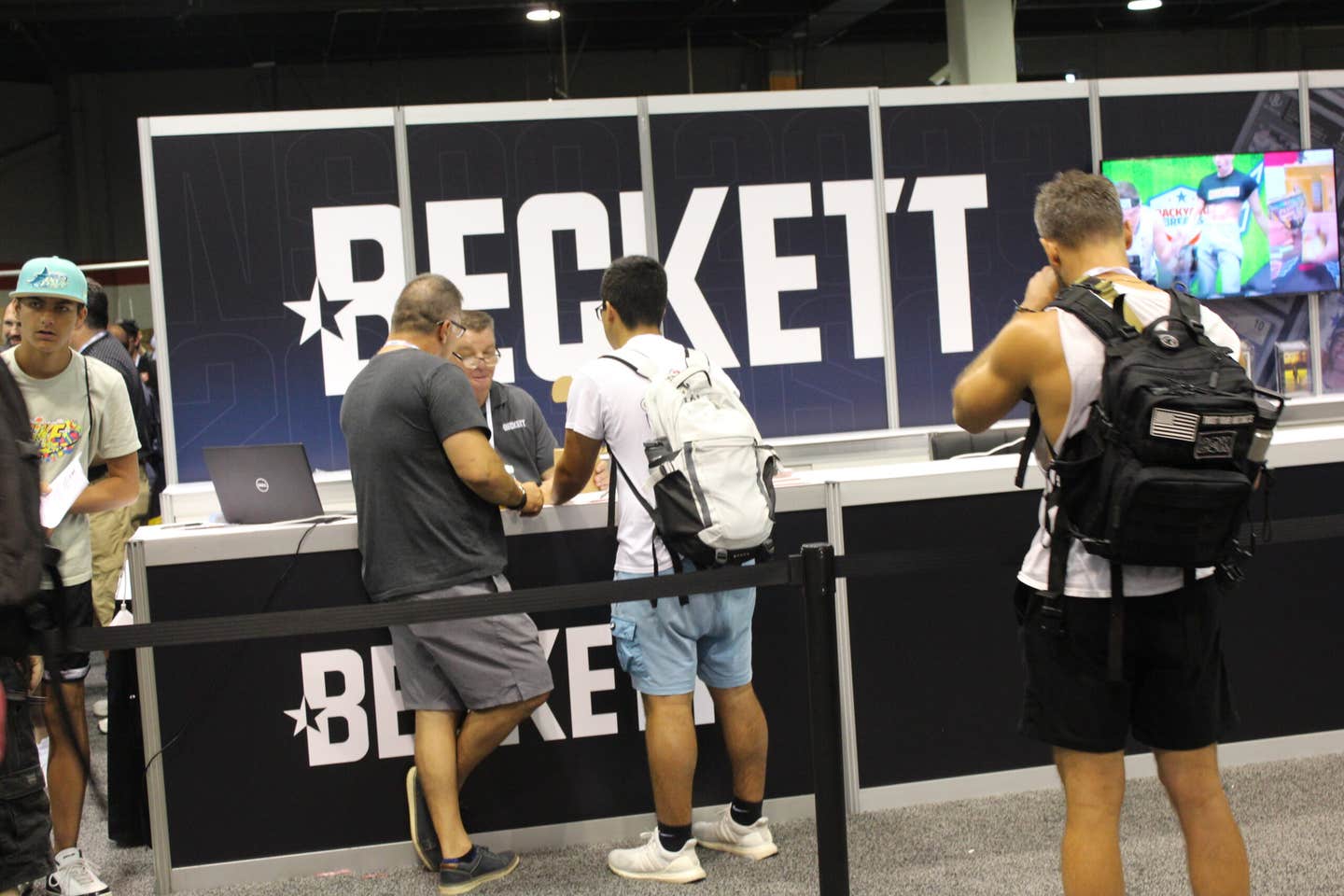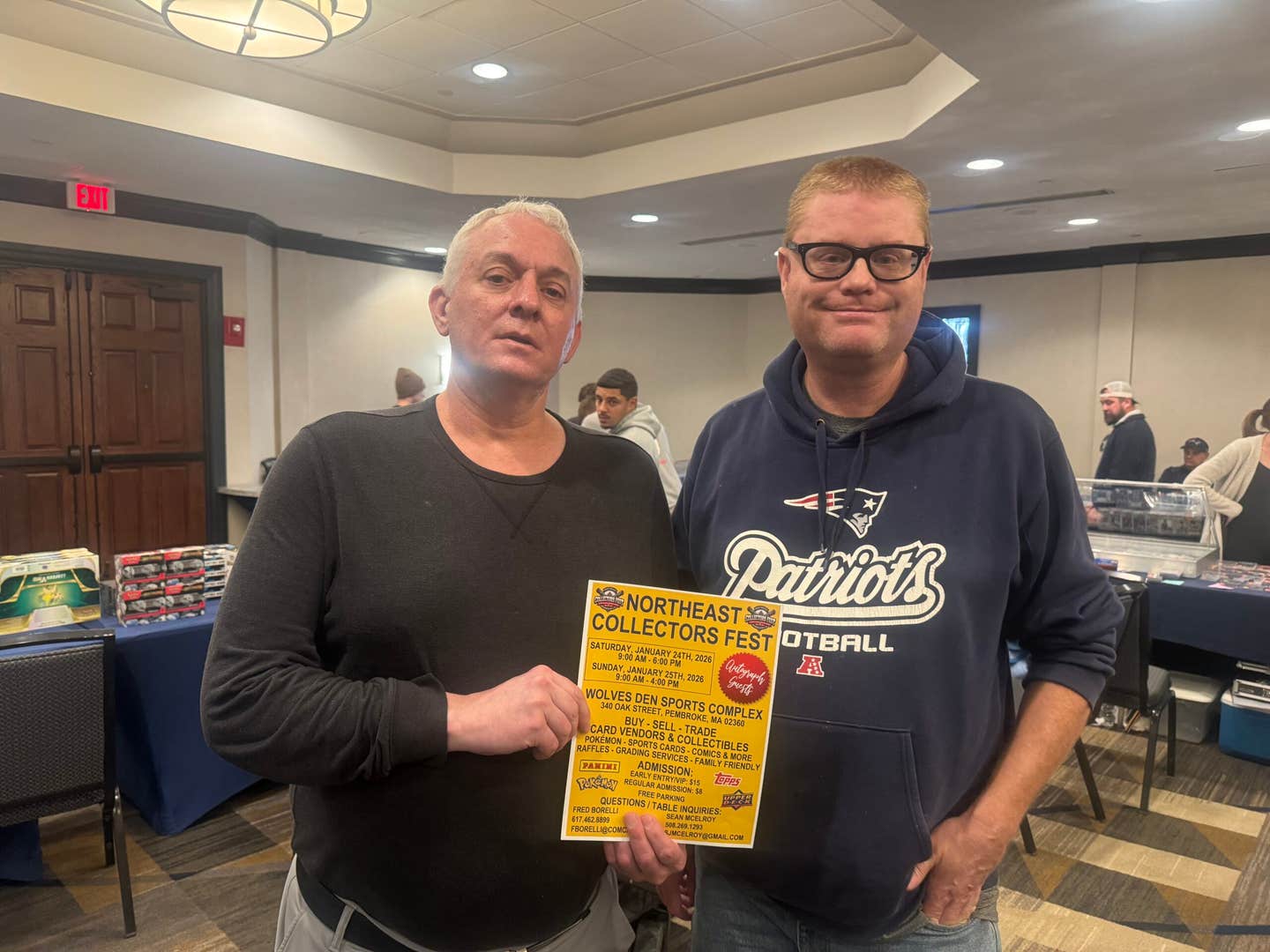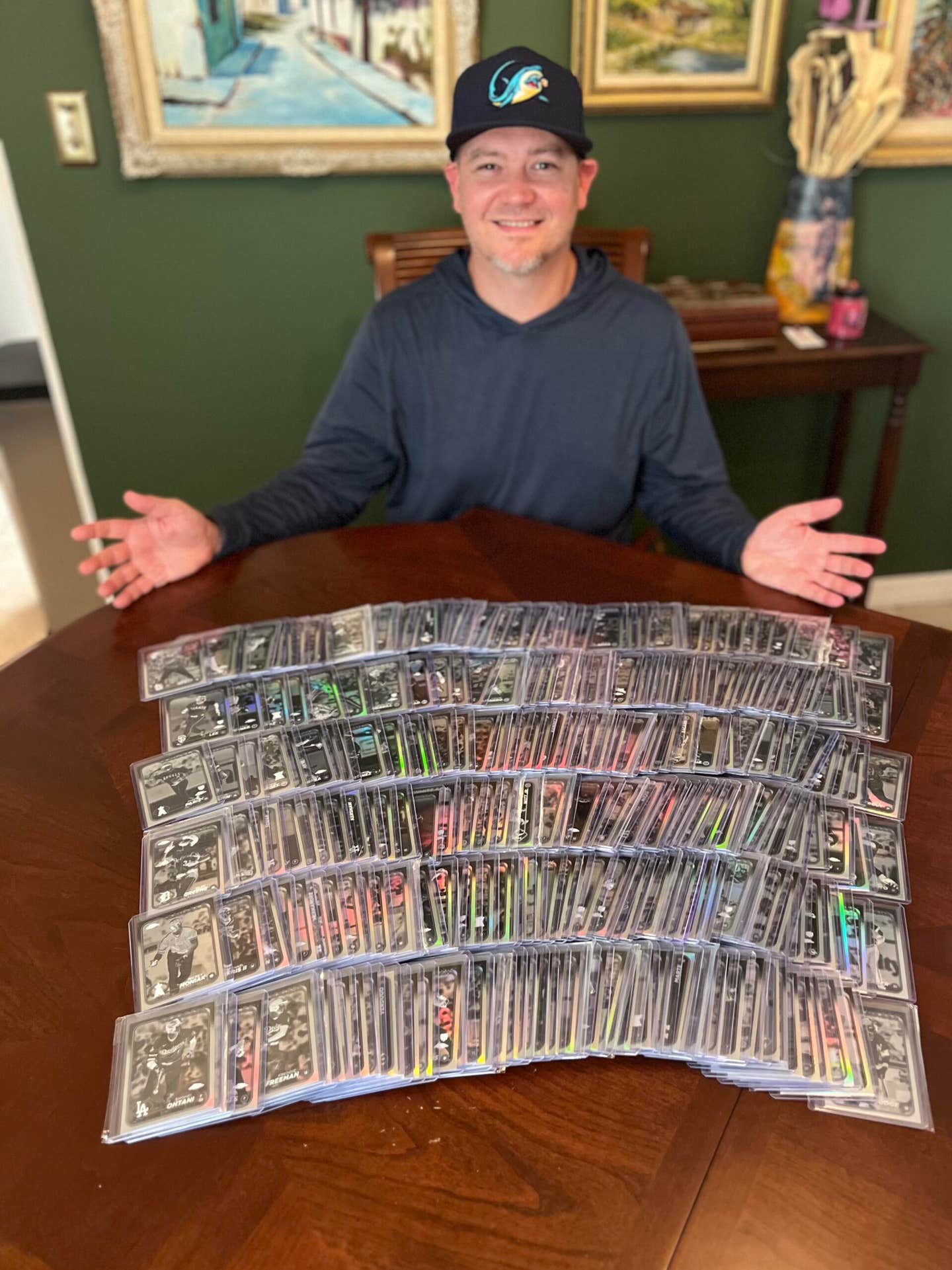Football
Set Overview: 1974 Topps Parker Brothers Football
By Reid Creager
When it came to fairly old sports cards, this was a new one on me.
About five years ago I was poring through some gently used 1974 Topps football cards at Valley Sports Cards, Memorabilia & Picture Framing in Tarzana, Calif. A card of San Francisco 49ers center Forrest Blue was in a penny sleeve that had a small sticker on the front. Someone had written “Parker Bros.” on it.
I showed it to Alex Mortimer, the store’s genial owner and operator. He said the card was part of a Parker Brothers game from the 1970s, but that was all he knew.
I was well acquainted with the 1967 Topps football cards from Milton Bradley’s elusive 1969 Win-A-Card board game. These hadn’t really picked up steam with collectors, but I knew this was just a matter of time. So I investigated the Parker Brothers cards.
This wasn’t a simple matter of cards that had a slightly different color on their backs than their standard Topps counterparts. Oh, no. This was about some cards having alternate pictures on the front and some cards having 1972 stat lines on the back and some having 1973 stat lines, and some having one asterisk on the back and some having two, and some being variations within variations.
Forty years after the Parker Brothers Pro Draft board game hit the shelves of U.S. toy stores, the cards from the game are still unknown to many collectors – and even those who are aware of them aren’t fully sure what’s what. One thing is certain: 1974 Topps Parker Brothers cards are among the most interesting and confusing vintage gems in the hobby.
About the game
It’s understandable that Topps turned to Parker Brothers in another attempt to get kids interested in football cards, which had always played second fiddle to baseball cards. Topps didn’t even have the rights to reproduce team logos on players’ helmets and uniforms throughout the 1970s – not until 1982. Helmet logos were always airbrushed out of the cards.
Pro Draft was likely the first sports board game built on the premise that the games we love are a business before anything else: The “action” is not in scoring touchdowns or points but in being a good general manager.
Players vie to be the first to assemble a complete starting offensive lineup. So the cards only include offensive players (10 running backs, nine wide receivers, eight guards, eight tackles and five each of quarterbacks, tight ends and centers).
The game’s stated object says, “Players, each acting as a manager of a pro football team, try to build the team with the most valuable players.” The game comes with Value, Option and Contract cards that are tied to the pursuit.
Value cards have various point totals reflecting intangibles that range from “Sleeps with a football” to “Flakey!” Option cards enable participants to sign, acquire or trade players. Contract cards feature various dollar amounts.
I’ve read the rules, along with posts from now-middle-age collectors who remember playing the game. One of those posts: “Each player is assigned a value at random except for your first 2 picks. Your favorite player might be a superstar or might end up to be a dud. You have the ability before each draft to see if a player will be a steady performer with a value between 25 and 60. OR take a chance and draft an ‘A’ value player, he might be a 100 point player or could end up a big fat zero. The first player to complete an 11 player offensive line up (quality or not) gets a 75 point bonus. If say the 3rd player to finish his line up has a better quality of players in his line up he could still win the game. In a 4 participant game the score of the winner is usually around 500 pts.”
This made me dizzier than a hit from Deacon Jones. As a kid, I would rather have been outside tossing the pigskin with a pal. Or playing Sorry. Or cleaning up my room.
Different versions
Some collectors who had the game when they were kids say earlier versions came with 1973 Topps cards that were identical to the ones sold in packs. This could be true; some of the games I’ve bought on eBay have come with 1973 cards (although the ’73s could have been substituted for ’74s that were lost). However, from a collector’s standpoint, this is moot because there would be no way to distinguish a 1973 Topps card from a ’73 Parker Brothers – so there is no such thing as a catalogued 1973 Parker Brothers card.
We do, however, know this much: The 50 1974 Topps cards chosen for inclusion in the Pro Draft game were located in the upper left corner of uncut sheets, in five horizontal rows of 10 cards each. They include five Hall of Famers: Dan Dierdorf, Bob Hayes, Tom Mack, Gene Upshaw and Rayfield Wright.
Six of the cards have different fronts than their Topps counterparts – three of the cards departing from their standard-issue horizontal action shots in favor of vertical poses so they would fit when stood up in a game board that had 2-inch slots. Those three cards feature Charlie Johnson, Norm Snead and Bob Windsor.
The other three (Forrest Blue, Tom Mack and Bob Tucker) came without the All-Pro designation on their corresponding Topps card, so they also would appear more uniform with the others. So all 50 of the ’74 Parker Brothers cards feature the goalpost design on the fronts.
At least two versions of the game were produced (maybe more if there was a game that had 1973 cards).
Regarding the ’74 cards, an early Parker Brothers Pro Draft version included 1972 stat lines on the backs for skills players (non-offensive linemen), with two asterisks at the bottom. A later and reportedly more scarce version features 44 cards that are identical to the regular Topps issue, with 1973 stat lines and one asterisk on the bottom backs, so they can’t be identified as Parker Brothers cards. But the other six – the cards with the different fronts from the Topps issue – also have the ’73 stat lines and just one asterisk instead of the two they feature in the earlier version of the game, making them a variation within a variation.
Because some of the Parker Brothers cards include offensive linemen, they have no statistic lines on the back. But you can tell them from the Topps versions because they have two asterisks at the bottom, not one.
Got all that? There’s more. Finding a ’74 football card with two asterisks on the back doesn’t necessarily make it a Parker Brothers variation. In fact, far from it: Hundreds of the regular 1974 Topps cards also have two asterisks, even though they never were part of the Parker Brothers game. Beckett.com identifies these Topps cards as Nos. 26, 129, 130, 156, 162, 219, 265-364, 367-422 and 424-528.
Condition challenges
These complications can entice hard-core vintage collectors and overwhelm others. While at shows, I’ve personally tried to give veteran card dealers a heads-up on 1974 Topps Parker Brothers. By the time I’m finished trying to explain all the things that make these cards different – and not different – from the regular Topps cards, I get a glassy-eyed, blank look that you’d see on a teenager staring into an iPad.
Combine this with the Parker Brothers cards still being relatively unknown, and it’s not that difficult to find them at shows big and small. You can also routinely go on eBay and find anywhere from a few to 10 Pro Draft games, often with the original 50 player cards that came with them. So, unlike with the ’67 Milton Bradley football cards, you can easily and instantly own the complete Parker Brothers set.
Maybe this is why the cards don’t command a premium, at least at this point.
Mike Thomas, who wrote about the Parker Brothers cards on his online store/blog Nearmint’s Vintage Football, told me: “I have found that it’s easier to purchase the whole game to get the cards, rather than try to piece together the set a card at a time.”
Some may assume this means the cards are easy find in high grade. This assumption would be wrong.
“Most of the cards I have are well worn, presumably because kids played the game with them,” Thomas said. “I imagine it would be a challenge to assemble a high-grade set.”
I can vouch for this, having bought about a dozen of the Pro Draft games online in the past five years (shipping costs alone make this expensive). Not only are the corners often problematic, Topps’ field goal design from that year wasn’t always centering-friendly in the first place. Even when the cards are well centered, sometimes the goalposts look slightly misaligned due to frequent minor diamond cuts on the Parker Brothers cards.
Several years ago, I was the first person to ever have some of these cards graded by PSA – after pointing out that they appear in the Standard Catalog of Vintage Football Cards, and explaining to a PSA representative all of the things that do and don’t make a Parker Brothers card. As of Aug. 1, PSA had graded only 41 of the Parker Brothers cards, with seven 9s and zero 10s. By contrast, a staggering 34,771 regular ’74 Topps cards had been graded, with 12,399 9s and 1,726 10s.
Given this kind of scarcity in high grade for the Parker Brothers cards and the ease of putting together a high-grade regular ’74 Topps set, it would seem natural for the Parker Brothers issues to take off. There were only a half-dozen or so Parker Brothers singles on eBay until the past year; now you’ll find more than 100 – although few, if any, are in high grade and it’s rare to see any PSA examples.
But it’s a fun challenge, regardless of where the values end up. So I’ll keep looking for the cards and picking them up when I can afford it, even if that means swallowing the added expense of the whole Pro Draft package.
As long as I don’t have to play the game!
1974 Topps Parker Brothers Checklist
All card numbers are identical to the regular Topps cards:
4 Ken Bowman
6 Jerry Smith
7 Ed Podolak
9 Pat Matson
11 Frank Pitts
15 Winston Hill
18 Rich Coady
19 Ken Willard
21 Ben Hawkins
23 Norm Snead (vertical)
24 Jim Yarborough
28 Bob Hayes HOF
32 Dan Dierdorf HOF
35 Essex Johnson
39 Mike Siani
42 Del Williams
43 Don McCauley
44 Randy Jackson
46 Gene Washington (49ers)
49 Bob Windsor (vertical)
50 John Hadl
52 Steve Owens
54 Rayfield Wright HOF
57 Milt Sunde
58 Bill Kilmer
61 Rufus Mayes
63 Gene Washington (Broncos)
65 Eugene Upshaw HOF
75 Fred Willis
77 Tom Neville
78 Ted Kwalik
80 John Niland
81 Ted Fritsch Jr.
83 Jack Snow
87 Mike Phipps
90 MacArthur Lane
95 Calvin Hill
96 Len Rohde
101 Gary Garrison
103 Len St. Jean
107 Jim Mitchell
109 Harry Schuh
110 Greg Pruitt
111 Ed Flanagan
113 Chuck Foreman
116 Charlie Johnson (vertical)
119 Roy Jefferson
124 Forrest Blue
(no All-Pro designation)
126 Tom Mack HOF
(no All-Pro designation)
127 Bob Tucker
(no All-Pro designation)
Reid Creager is a freelance contributor to SCD. He can be reached at reidcreager@yahoo.com.




